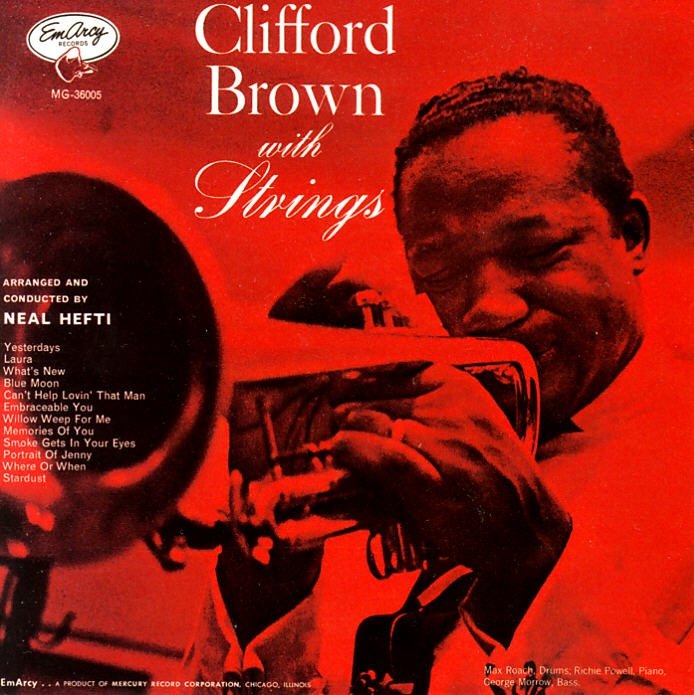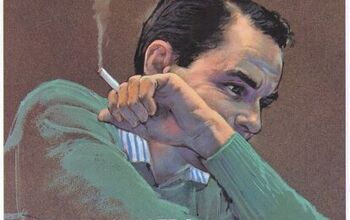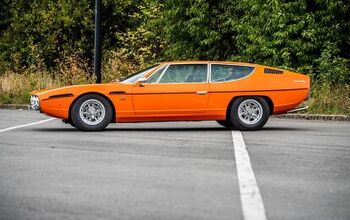Grand Touring Music, Part 2
Didn’t read Part 1? Catch it here
Our imaginary road trip continues in jazz, which is America’s greatest contribution to music.
One story has it thus: When the Federal government disposed of surplus material after the Civil War, rather than spread things around evenly, the bureaucrats sent all the blankets to one place, all the canteens to another, and so on. The story goes on to claim that all the Civil War surplus brass-band instruments went to New Orleans.
Regardless how it happened, it can’t be denied that the most important solo instrument in early jazz was the trumpet. The trumpet has the practical advantages of comparatively low cost, portability, and the ability to make a loud sound that can carry outdoors. It does have one musical drawback, however. Unlike the piano, organ, or guitar, the trumpet can play only one note at a time.
J.S. Bach played the organ and the harpsichord, while Beethoven played the piano. So Louis Armstrong holds the distinction of being the only person to revolutionize Western music while playing a one-note-at-a-time instrument. Legendary jazz historian Stanley Crouch claims that one of Armstrong’s formative musical influences was listening to early phonograph records by Italian operatic tenor Enrico Caruso.
Of all the trumpet players who came after Armstrong, the one who phrased most like a vocalist was Clifford Brown. Following in the footsteps of alto-sax genius Charlie Parker, Brown recorded a “with strings” album in January 1955. The setlist reads like a “Best of the Great American Songbook” cheat sheet, the first four tracks being “Yesterdays,” “Laura,” “What’s New,” and “Blue Moon.”
Clean-living and universally loved, Brown, along with pianist Richie Powell and Powell’s wife, died in an automobile accident on the Pennsylvania Turnpike in 1956. Brown was 25 years old.
Listen to “Where Or When” from Clifford Brown With Strings here.
Buy it here.
What the piano lacks in portability it more than makes up for in versatility. Aaron Diehl is already a star whose résumé includes having toured Europe with Wynton Marsalis at age 17 and studies at the Juilliard School with Oxana Yablonskaya.
Diehl’s studio-recording debut is a quartet outing with vibes, bass, and drums. Along with the expected standards such as “Moonlight in Vermont,” there are surprises such as Diehl’s own arrangement of the “Forlane” (a dance movement) from Ravel’s neoclassical suite Le tombeau de Couperin.
The showstopper however is “Bess, You Is My Woman Now.” Diehl delivers the blues, polyrhythms, and baskets full of virtuoso classical technique coupled with an innate sense of musical drama. Roll over Van Cliburn, is all I can say.
Listen to “Moonlight in Vermont” (live) here.
Buy it here.
The arabesque English-horn melody that opens the slow movement of Joaquín Rodrigo’s classical-guitar Concierto de Aranjuez provided the inspiration for Miles Davis’ famous Sketches of Spain album of 1960. Nevertheless, I think that an even more successful use of that haunting and hypnotic theme was the title track of guitarist Jim Hall’s 1975 Concierto.
On that Van Gelder Studios session, Hall shared soloing duties with Paul Desmond (of Dave Brubeck Quintet “Take Five” fame), Chet Baker, and Sir Roland Hanna over the rock-solid foundation laid down by the rhythm section of bassist Ron Carter and drummer Steve Gadd.
Jim Hall’s guitar style was less-is-more, as shown by his frequent use of single-note guitar lines. Don’t let Hall’s not being a household name deny you the pleasure of hearing one of the most musically satisfying extended (20 minutes) cool-jazz collaborations on record.
Listen to Concierto de Aranjuez here.
Buy it here.
5. Sir Roland Hanna: Tributaries: Reflections on Tommy Flanagan
The title track of Jim Hall’s Concierto climaxes during Sir Roland Hanna’s piano solo. (The honorific was Liberian, not British.) Hanna was in his own way as underappreciated as Jim Hall was. Hanna, who studied at both Eastman and Juilliard, was usually in the shadow of his Detroit boyhood friend and later colleague Tommy Flanagan.
After Flanagan’s death, Hanna began putting together a tribute album, mostly of songs associated with Flanagan rather than written by him. (I respect Hanna’s decision not to record his own version of Flanagan’s most widely-loved track, the 1978 trio rendition of Horace Silver’s “Peace.”) As it turned out, Hanna’s tribute project was recorded not long before Hanna himself died.
Standout tracks include Thad Jones’ “A Child Is Born,” Green and Heyman’s “Body and Soul,” and the Gershwins’ “Soon,” but the best of the bunch is without question Evans and Livingston’s “Never Let Me Go,” which Hanna makes sound like a mournful slow movement from a sonata by Chopin or Rachmaninoff.
Listen to “Body and Soul” here.
Buy it here.
Record producer John Marks is a columnist for Stereophile magazine.
More by John Marks
Latest Car Reviews
Read moreLatest Product Reviews
Read moreRecent Comments
- Ajla Is there something proprietary or installed on the moon with these that I'm not aware of?
- Tane94 Awaiting the EV3 unveil this month. Kia continues to lead, though I will miss the Soul
- Jeanbaptiste I know this will never be seen, but the real answer is NO Government mandated tech. The reason why is that when the government mandates something, we miss out on signals that the free market will give to weather or not people actually want this or that this tech would actually help. It's like mandating AM radio for cars when people could just buy a $10 am radio if they really like am so much.
- 28-Cars-Later $12K? I needed a good laugh.
- EBFlex Wait...the feds are claiming that inflation was not FJBs fault 6 months prior to an election where he is massively losing in the polls in every single category?Eyebrow raised.




































Comments
Join the conversation
Completed cross-country trip a few months ago and ambient, chill-out, and trip-hop were the soundscape for the journey.
A Counterpoint to Mr Marks ; First off Jim Hall's " Concerto ' album . No doubt the weakest album put out by one of the greatest and most influential jazz guitarists of our time . CTI's somewhat cynical attempt to make Jim into a Great White Hope Wes Montgomery pop musician by doing a ' Jazz ' arrangement of one of the most over played and tired bits of classical fluff known . While not a bad album in comparison to a lot of the pablum CTI released it certainly is not the Jim Hall album I or Jim himself would of recommended . At the top of Jim's [ Jim never really cared much for the Concerto album ] list would of been either the two duet albums with Bill Evans or the two he did with Ron Carter . After that and in my opinion the more ' roadbable ' album would be Jim's " All Across the City " A classic player adapting the minimal amount of new technology and ideas into an album that is both musically captivating as well as contemporary and relevant Clifford Browns " With Strings " Again one of the weakest albums by one of the best players . I won't even go into the multiple reasons why . If you don't already know .... you wouldn't understand ... Jazz or Clifford Brown that is Aaron Deihl - Like his mentor Wynton Marsalis .... Aaron brings nothing new to the jazz table . Simply repeating and pastiching tired old formulas while trying to pretend he is relevant or creative . Sir Roland Hanna . With all the creative and original music Sir Hanna did Mr Marks once again pulls out one of the weakest and least relevant albums the man ever recorded . Somehow I'm seeing a trend here . Pick out the greats ... dredge their catalog for the weakest and least relevant music they recorded [ as well as choosing the young cat who has yet to prove he has anything other than some decent chops to offer ] And call it good PS; Jack . I felt I owed you at least this much Here's my short list list of Jazz road albums ; Bill Frisell - " Good Dog Happy Man " Yellow Jackets - " The Spin " Brad Mehldau - " Highway Rider " Keith Jarret - " Bregenz - Munchen " Pat Metheny - " Secret Story " Tomasz Stanko - " Dark Eyes " Tord Gustavsen 4tet - " The Well " Oregon - " Winter Light ' .. and though not specifically jazz but jazz influenced ... not to mention influencing many a jazz musician.. Ry Cooder - " Music by Ry Cooder "